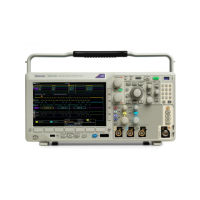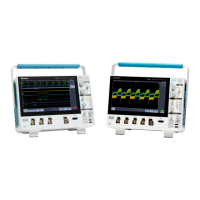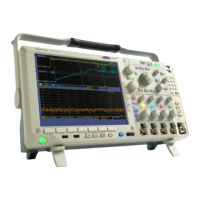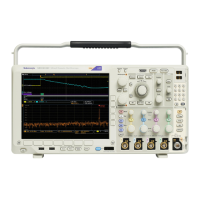Commands Listed in Alphabetical Order
Syntax
WFMInpre:BYT_
Nr <NR1>
WFMInpre:BYT_Nr?
Related Commands
WFMInpre:BIT_Nr
Arguments
<NR1> is the number of bytes per data point. The number of bytes can be 1 or 2
for Analog, Math or the digital channels D0 – D15. It can be 4 or 8 for DIGital
collection data. It must be 4 for frequen
cy domain trace data.
Examples
WFMINPRE:BYT_NR 1 sets the number of bytes per incoming waveform data
point to 1, which is the default setting.
WFMINPRE:BYT_NR? might return :WFMINPRE:BYT_NR 2 indicating that there
are 2 bytes per incoming waveform data point.
WFMInpre:BYT_Or
This command specifies which byte of incoming binary waveform data is
transmitted first (the byte order). The byte order can either be MSB (most
significant byte first) or LSB (least significant
byte first, also known as IBM
format). This specification only has meaning when WFMInpre:ENCdg is set to
BINary and WFMInpre:BYT_Nr is 2.
(See page 2-95, Waveform Transfer Command Group.)
Group
Waveform Transfer
Syntax
WFMInpre:BYT_Or {LSB|MSB}
WFMInpre:BYT_Or?
Related Commands
WFMInpre:ENCdg,
WFMInpre:BYT_Nr,
WFMOutpre:BYT_Or
Arguments
LSB specifies that the least significantbytewillbeexpectedfirst.
MSB specifies that the most significant byte will be expected first.
Examples
WFMINPRE:BYT_OR MSB sets the most significant incoming byte of incoming
waveform data to be expected first.
MDO4000/B/C, MSO/DPO4000B and MDO3000 Series Oscilloscopes Programmer Manual 2-947

